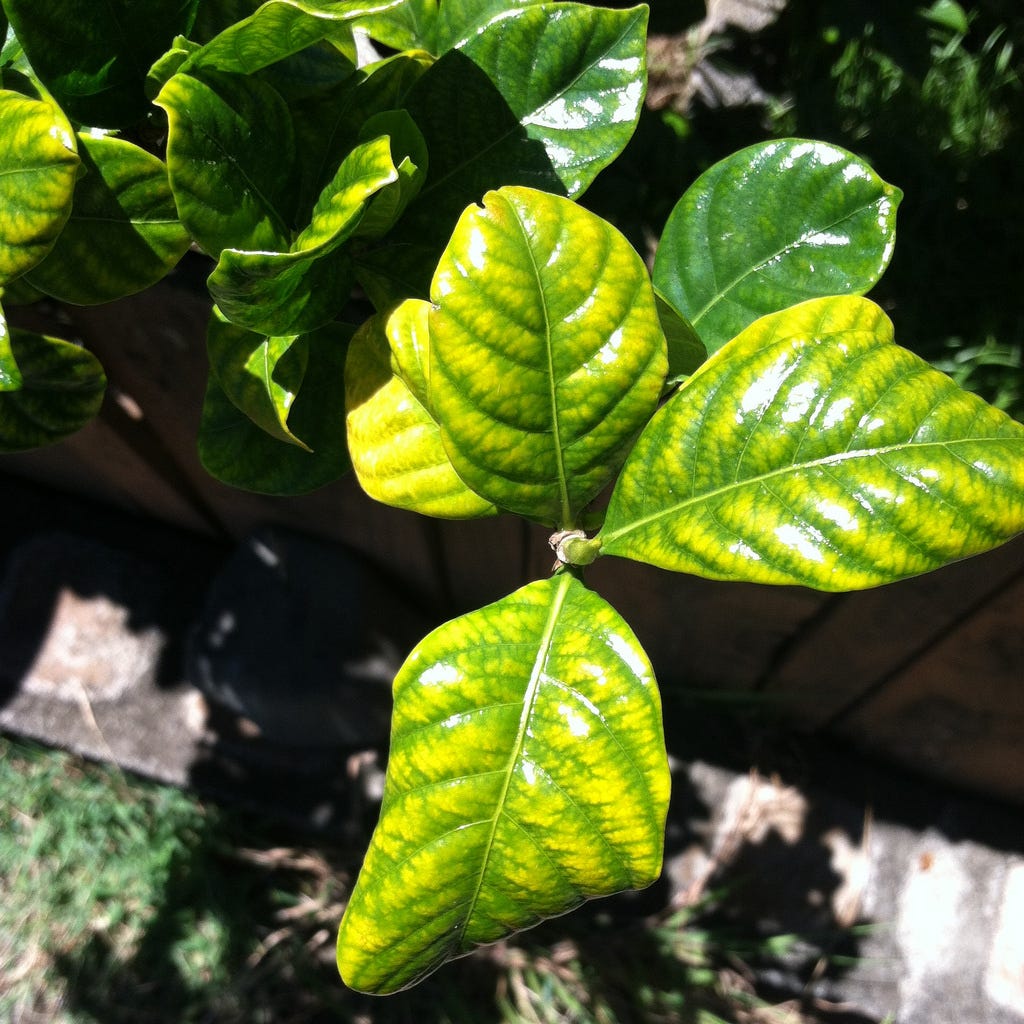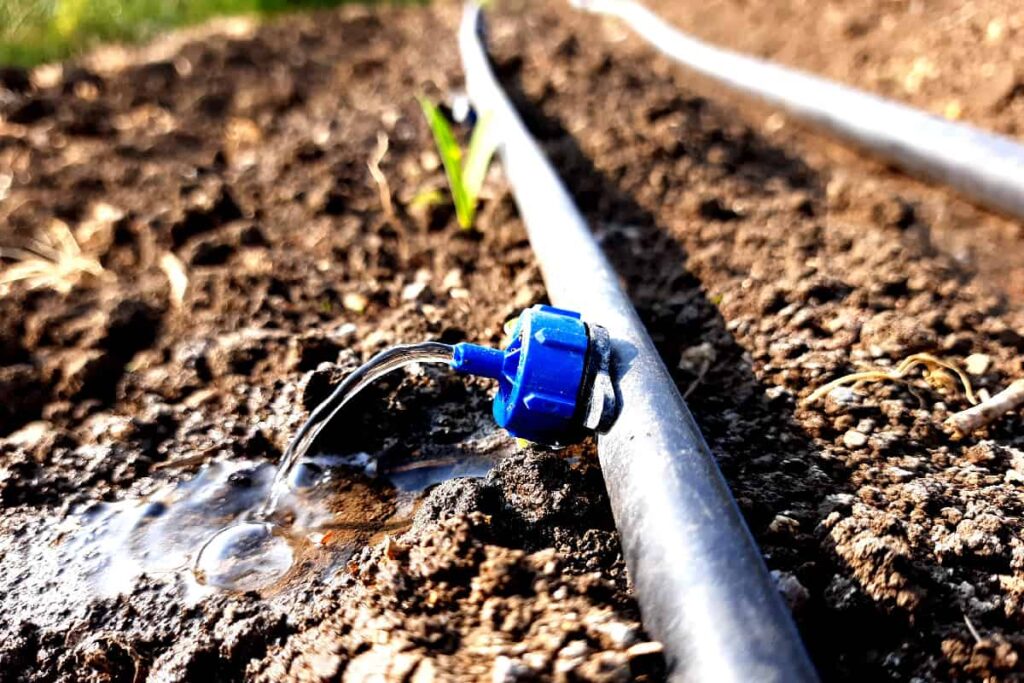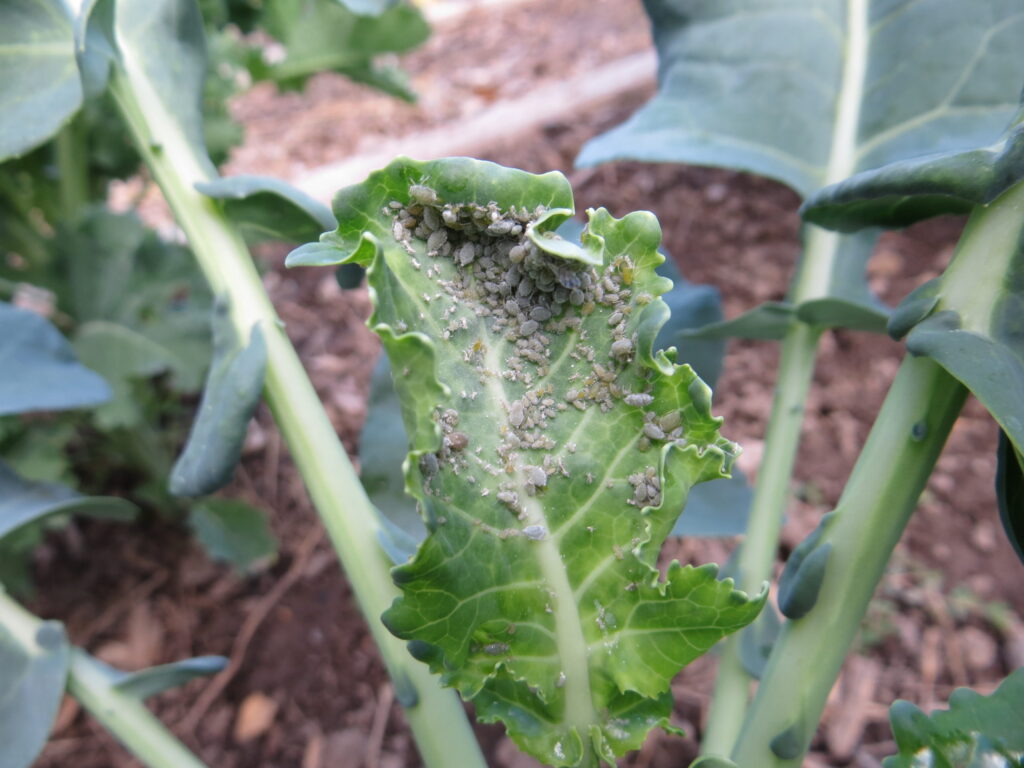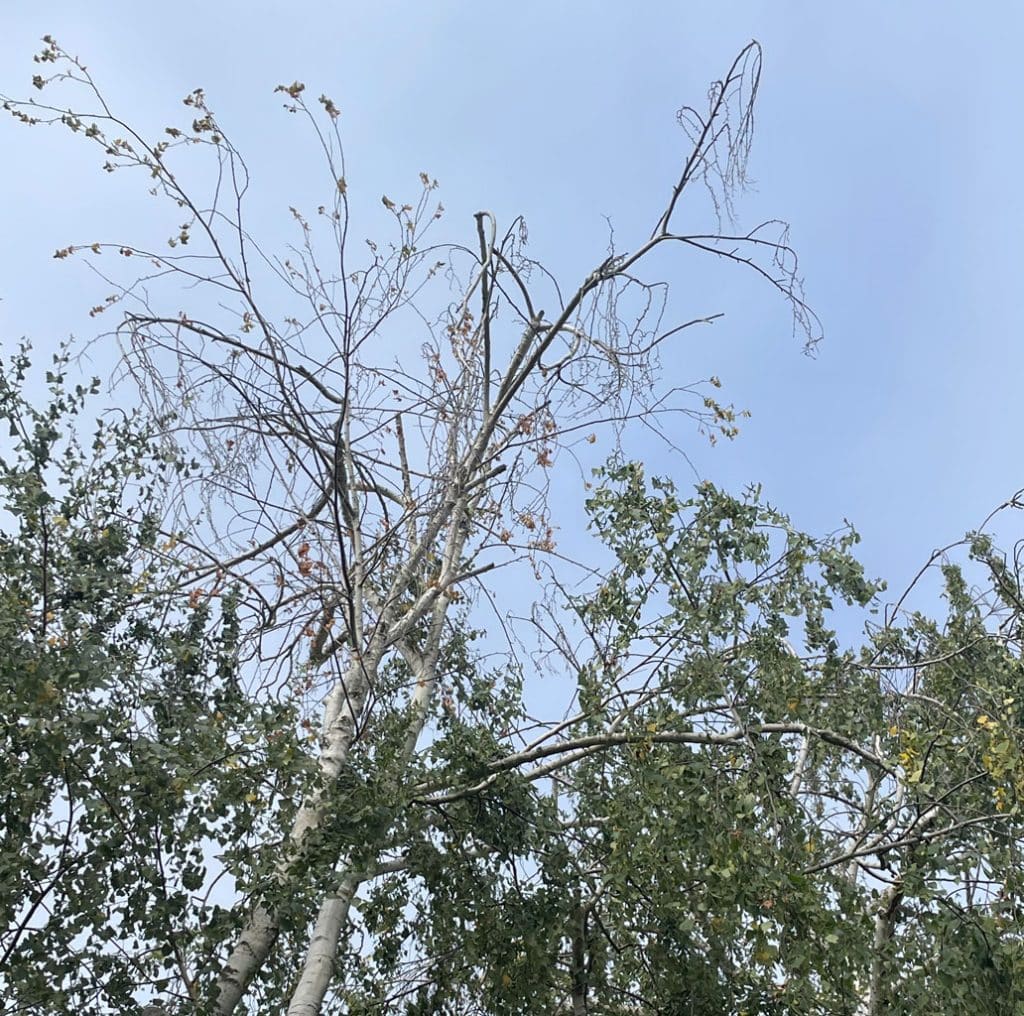
It’s that time of year when herbicide damage starts to show up—something that’s, unfortunately, pretty predictable. If you’re noticing cupped or distorted leaves, especially on tomatoes or peppers, there’s a good chance it’s from herbicide drift. The good news? If your garden got hit, it’s not too late to replant!

As we move closer to summer, you may also see signs of iron chlorosis—those yellowing leaves with dark green veins—on plants like viburnums and maples. It’s not that the soil lacks iron or manganese, but our high pH clay soils make it hard for plants to absorb them. I’ve had good luck using a water-soluble iron spray. You can also help by mulching with compost, pine bark, or peat to improve soil conditions over time.
Peonies not blooming this year? Or blooming less than they used to? A couple of common reasons: they may be planted too deep (those eyes should be no more than 2 inches below the surface), or they might be getting shaded by trees that have grown over the years. If that’s the case, wait until September and consider moving them to a sunnier spot.

To help prevent bacterial and fungal issues, think about switching to drip irrigation. It keeps the leaves and stems dry, uses less water, and is super helpful if you plan to be away for a few days. Plus, it’s easy to set up.

One more thing—it’s shaping up to be a big year for aphids. They’re tiny but persistent. Keep an eye on your plants and give them a good spray with the hose if you see any. If they’re really bad, insecticidal soap, neem oil, or Malathion can help—just don’t forget to spray the undersides of the leaves where they like to hide.
Happy gardening! 🌱 Let’s keep those plants healthy and blooming.






